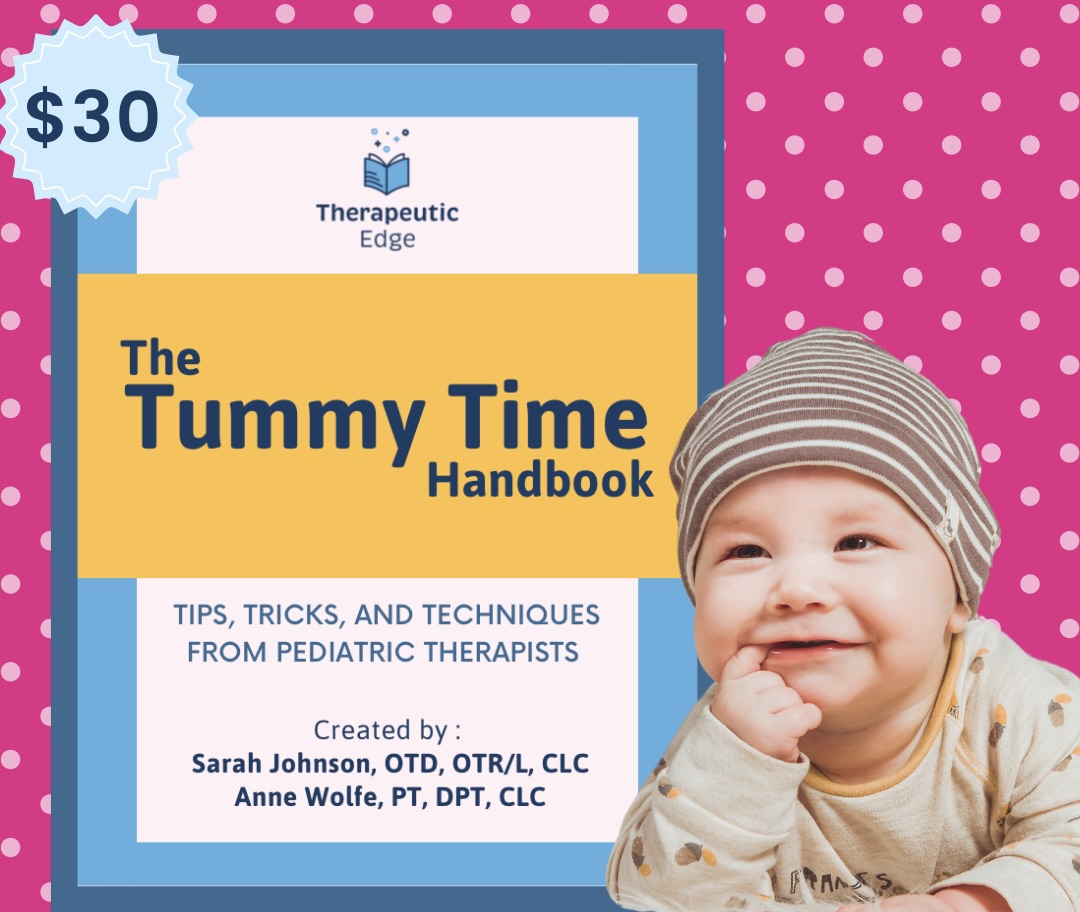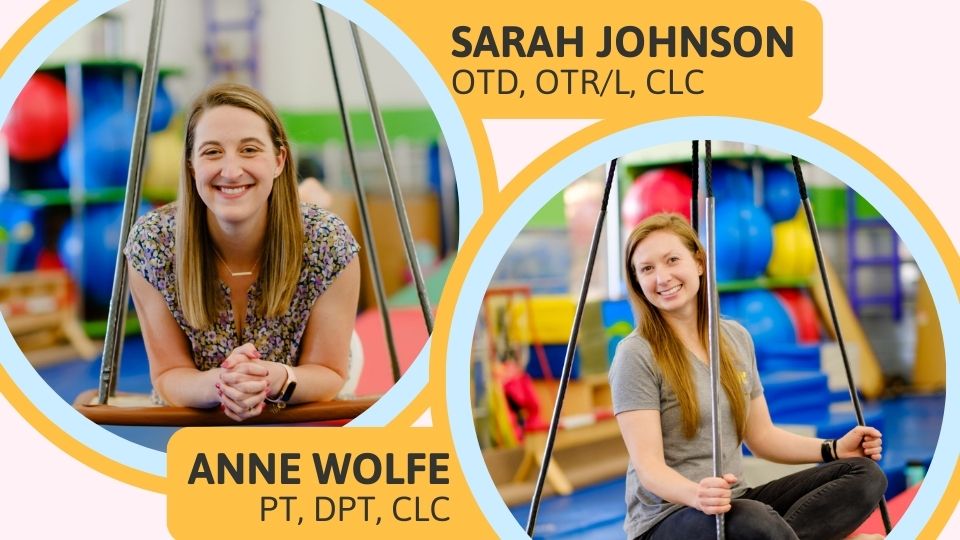The Tummy Time Handbook
This eBook is an essential guide to navigating the fussy moments and exhaustion that come with an Infant and Tummy Time.

Are you a therapist or professional working with infants and their families? With 39 pages packed with research-backed tips, tricks, and modifications this book makes the perfect addition to any professional library AND is a great recommendation for clients to support home programming.
Did we mention it also makes a great gift for expecting parents and caregivers?
Download now and make tummy time enjoyable for you and your baby!
The Tummy Time Handbook includes 39 info-packed pages covering:
- 8 different Tummy Time positions (with full-color pictures and explanations)
- Motor milestone and the progression of Tummy Time
- Tummy Time Tips broken down by age
- Positioning for Reflux
- How to incorporate toys
- Therapist-recommended toy guide
- Bonus descriptions of other infant positioning
- Notes on the use of baby “container”
- Scheduling suggestions
- Resources and research
After completing your purchase, you will be emailed with your eBook ready for download!
Cost: $30
*Our eBooks are hosted online on the Thinkific platform. Clicking the button above will redirect you to the book’s page in Thinkific where you will be able to complete your purchase.
Meet Your Tummy Time Guides

Meet Dr. Sarah Johnson and Dr. Anne Wolfe! In addition to their doctorate degrees, these women have spent hundreds of combined hours in specialty training and even more time providing hands-on treatment with babies and their caregivers. Together they have created this handbook to help share their expertise to help you and your baby enjoy this precious bonding time.
Supporting Your Late Talker
Language development can be both simple and incredibly complex. Some children seem to be born talking. Others seem to take their own sweet time. It can be a challenge as a parent or caregiver to know when your child's language is okay and when to wait and see. For...
The Puzzle Piece vs. The Infinity Symbol
When it comes to autism awareness, symbols play a powerful role in representing the community and fostering understanding. Two of the most prominent symbols are the puzzle piece and the infinity symbol. While both aim to raise awareness, they resonate differently with various members of the autism community. In this blog, we’ll explore the origins and significance of these symbols, their impact on advocacy, and why the shift from the puzzle piece to the infinity symbol has gained momentum.
10 Tips for a Sensory-Friendly 4th of July
The 4th of July is a time of celebration, filled with vibrant festivities, parades, barbecues, and, of course, fireworks. However, for children with Sensory Processing Disorder (SPD), these activities can be overwhelming and distressing. As a parent, it's essential to...
